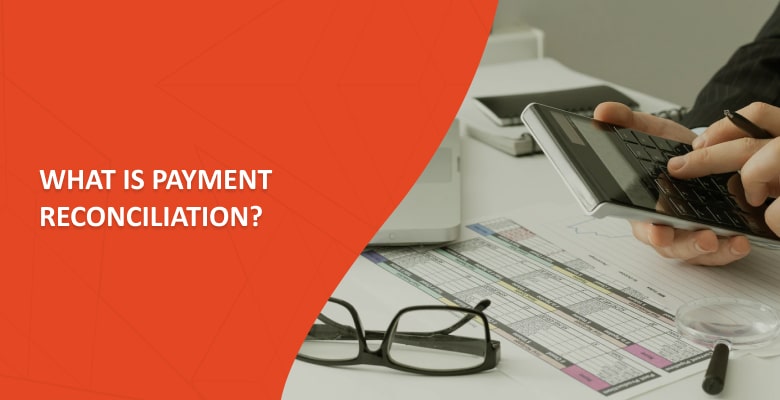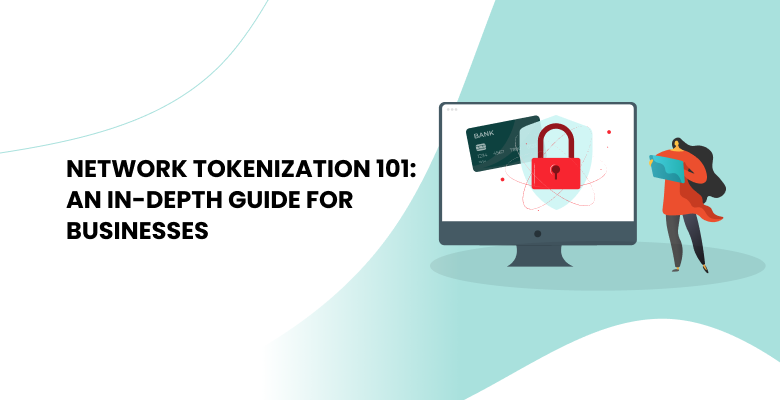
- What does payment reconciliation stand for?
- Why do you need to reconcile payments?
- What happens if you don’t reconcile your bank statements?
- How Does Payment Reconciliation Work?
- Types of payment reconciliation
- Risks and challenges of payment reconciliation
- Automated payment reconciliation
- Benefits of automated payment reconciliation
- Payment reconciliation example
- Best practices of payment reconciliation
- How Akurateco helps with payment reconciliation
- Simplified reconciliation
- Conclusion
There are probably hundreds of finance teams spending days and nights attempting to process payment reconciliation right now. With the increasing number of payment channels, business locations, and diverse cash inflows and outflows, the process of payment reconciliation is labor-intensive and prone to error when carried out manually.
Every business needs to track its financial activities to achieve growth and operational efficiency. The best way to ensure the foundation of your financial operations is to maintain proper financial records by tracking every payment. On the topic of payment reconciliation, we’ll shed some light on the most critical areas to track and give you some tips for improving your organization’s financial status.
What does payment reconciliation stand for?
First of all, let’s identify the payment reconciliation meaning. Payment reconciliation is a basic accounting process that ensures the identity and integrity of data between payment vendors and bank accounts. It allows you to quickly locate a discrepancy between two parameters and eliminate the possibility of error or fraud. As a rule, reconciliation is done at regular intervals, such as quarterly or monthly. It’s an essential part of the accounting process.
For merchants and SMBs, the main goal of reconciling bank statements is to ensure that the individual’s or business’s recorded balance matches the recorded balance of the bank.
But reconciliation cannot provide 100% accuracy because the payment system cannot halt its operations. A payment hub may process up to 10,000 transactions depending on the size of your business. So for better accuracy, you can use automation tools to keep all your records under one roof.
As a rule, payments reconciliation consists of two separate processes. The first is internal. It means that a company records every transaction that has been posted or scheduled. And for the second, external, the bank also keeps track of every transaction and activity. The statement of record enlists every transaction, including its details such as the costs, vendor, and payment method.
During the process of reconciliation, you’ll need to match the internal and external activities. In case of any discrepancies, you can determine if the errors occurred internally or externally.
Why do you need to reconcile payments?
While it may seem like busy and redundant work, keeping accurate and concise records is one of the most critical factors that contribute to a merchant’s success. It’s easy to make an error, lose a receipt, or have some technical faults. Here are some other reasons why you need to reconcile payments:
Spot fraudulent activities
During payments reconciliation, identifying frauds should be your first priority. If a third party has compromised your company account, reconciliation will flag the fraudulent activity and bullet-proof your earnings.
Verify statements
It’s not only banks that can make mistakes. While reconciling bank statements, you can confirm that your financial statements match those of your bank(s).
Reduce chargebacks and reclamations
While reconciling payments, you can verify payment status. For example, a payment may have a failed status in your system, while the payment status in the acquiring bank is marked as successful which may result in chargebacks and reclamations.
Data validation
Payment reconciliation process allows you to identify any mismatches and irregularities, such as duplicated entries, etc.
Tax reporting
You cannot generate a correct tax return without reconciling payments.
Verify all the chargebacks and refunds
While reconciling your payment, you can verify and estimate all the chargebacks and refunds that may influence the amount payable by your acquiring bank.
What happens if you don’t reconcile your bank statements?
If you don’t reconcile payment regularly, you run the risk of falling victim to unauthorized withdrawals, fraud, and bank errors. When left unchecked, these issues can lead to problems with the IRS and cash leaks, resulting in damaged business operations and stunted growth. Not to mention that digital payments sometimes get declined.
Moreover, the key goal of regular transaction checks is to identify fraud as early as possible since consumers are more protected under federal law than by a business. You cannot always rely on your banks to cover for errors or fraud in your account.
How Does Payment Reconciliation Work?
Generally, reconciliation of payments consists of the following steps:
Gather and review payment data
The first step is obtaining initial payment data, including internal and external records that consist of invoices, bank statements, credit card statements, and any other financial documents related to incoming payments.
Match transactions
The next step is to match each payment on the bank statement with the corresponding transaction in the business’s financial records. Often, this is done using invoice numbers, purchase order numbers, or customer names.
Identify payment mismatches
At this step, you need to identify mismatches between the business’s records and the bank statements. These mismatches could be due to various reasons, including errors in data entry, delayed processing, or even fraudulent activity.
Investigate the inconsistencies
Once inconsistencies are identified, they must be investigated to determine the underlying reason. This may involve contacting customers to confirm payment details, checking for errors in recording, or tracing missing payments.
Adjust records
If errors are found, you need to make adjustments to the financial records to correct them. There may be a need for reconciling bank balances or making other necessary adjustments.
Create a payment reconciliation report
A payment reconciliation report is generated at the end of the reconciliation process to summarize the findings. It provides a clear picture of the financial status, including any outstanding payments or mismatches.
Resolution
The ultimate resolution of the reconciliation process is financial records matching the actual payments received.
Types of payment reconciliation
As payment reconciliation is applied to each type of payment, there are as many reconciliation types as payment options. So, let’s examine the most popular ones.
In general, there are five basic reconciliation of payments types:
Bank reconciliation
It refers to reconciling a company’s financial records with its bank statements, which involves matching bank transactions with internal financial records, including deposits, withdrawals, and fees.
Credit card reconciliation
This involves reconciling credit card statements with the company’s internal records of credit card transactions, verifying their accuracy, and managing expenses.
Third-party payment reconciliation
This type of reconciliation entails reconciling payments processed through third-party payment providers (e.g., PayPal, Stripe) with internal records to ensure the accuracy of all transactions.
E-wallet payments reconciliation
Reconciling digital wallet payments consists of verifying and matching transactions made through digital wallet platforms like PayPal, Apple Pay, Google Wallet, and other similar services.
Risks and challenges of payment reconciliation
Although payment reconciliation is a crucial process for every business, it comes with a fair share of challenges.
Human Error
Manual reconciliation processes are prone to human errors, such as data entry mistakes, misinterpretation of documents, and oversight of discrepancies.
Data Complexity
Managing extensive transaction data, particularly in organizations dealing with multiple payment methods and channels, can be intricate and time-intensive, demanding considerable employee involvement.
Bank Errors
Banks and financial institutions may make errors in processing transactions or providing statements.
Lack of scalability
As a business develops, the volume of transactions increases, making reconciliation more complex. Scaling reconciliation processes to accommodate growth can be a challenge.
Automated payment reconciliation
Payment reconciliation falls into two main categories: manual and automated. Manual payment reconciliation implies that all the above-described payment reconciliation steps are done the manual way, consuming significant time and employee resources.
In contrast, automated payment reconciliation is a technology-driven process that streamlines and automates time-consuming, error-prone reconciliation across multiple providers, accounts, and payment methods. It is particularly valuable for businesses and organizations that deal with a high volume of transactions across multiple payment methods, accounts, and providers, as it reduces the time and effort required to match and verify each transaction across platforms.
Benefits of automated payment reconciliation
Automated payment reconciliation offers several significant benefits for businesses and organizations. Some of the key advantages are:
Time-saving
Automation greatly reduces the time required for reconciliation tasks, speeding up the process of matching and verifying transactions, especially in organizations with high transaction volumes.
Cost-saving
Automating tasks performed manually results in significant cost savings for a business. It liberates employee resources, enabling finance teams to concentrate on more strategic activities.
Enhanced efficiency
Automated payment reconciliation technology can process a large number of transactions simultaneously and handle repetitive tasks, improving businesses’ efficiency and productivity.
Reduced human error
Another major benefit is that it also minimizes the risk of errors that can occur during manual reconciliation due to a human factor, leading to more accurate financial records.
Scalability
The technology is easily scalable to accommodate growing transaction volumes, making them suitable for businesses of all sizes and contributing to the company’s growth.
Real-time reconciliation
Automated reconciliation offers online payment reconciliation with real-time verification, providing up-to-date financial information and allowing users to identify inconsistencies and mismatches with banks or payment providers right away, avoiding late fees.
Payment reconciliation example
Imagine you run an online e-commerce store that sells electronics. You accept payments through various channels, including credit cards, PayPal, and bank transfers. Your monthly reconciliation process is essential to ensure the accuracy of your financial records. So, you are faced with a choice: either do payment reconciliation manually or use automated reconciliation technology. Let’s review two different ways.
Manual payment reconciliation
At the end of each month, you need to gather all relevant financial data for reconciliation, including sales records, reports from your payment gateway providers, and monthly statements from your business bank account. You start by matching each sale recorded in your e-commerce platform with the corresponding payment in your payment processor’s report. For instance, you ensure that the $500 sale of a laptop on your website matches a $500 payment received via PayPal on the same date.
Next, you reconcile your bank statements. This involves matching the total deposits listed in your bank statement with the total of all payments received from your payment processors. You also account for any transaction fees deducted by the bank. If you find discrepancies during reconciliation, such as a payment missing in your records or an incorrect transaction amount, your next step is to investigate the issues. This may involve contacting customers, reviewing invoices, or reaching out to payment processors. Based on your findings, you make necessary adjustments in your financial records. For example, if you identify an unrecorded payment, you update your sales ledger to include it.
Overall, you generate a reconciliation report summarizing the entire process. This report provides a clear picture of your financial status, any outstanding payments, and the resolution of discrepancies. The payment reconciliation report serves as an official record of the reconciliation process. With reconciliation complete, you can confidently close your financial books for the month, ensuring that all transactions are accurately reflected in your financial statements.
Automated payment reconciliation
If you decide to automate payment reconciliation, your payment reconciliation system seamlessly integrates data from various sources at the end of the month, including the information from your e-commerce platform, bank, and payment processor statement. It automatically matches each sale recorded in your e-commerce platform with the corresponding payment in your payment processor’s report. The software tracks pending transactions, noting which payments are pending clearance, and continuously updates this information as transactions clear. If any discrepancies are detected, the automated payment reconciliation system flags these as exceptions for review. Based on the findings and resolutions of flagged exceptions, it automatically makes necessary adjustments to your financial records. The software generates a comprehensive reconciliation report summarizing the entire process. The payment reconciliation report is reviewed by your finance team or manager for approval. Lastly, you confidently close your financial books for the month, knowing that the process has been efficient, accurate, and compliant.
Best practices of payment reconciliation
Payment reconciliation is a critical financial process that requires careful attention to detail to ensure accuracy and financial integrity. Here are 4 best practices to take payment reconciliation efficiency to its highest:
Regular Reconciliation
Perform reconciliation on a regular basis to keep financial records up to date and identify issues promptly.
Automation
Consider automating the reconciliation process using advanced technology. Automation can reduce errors, save time, and improve efficiency.
Clear Documentation
Maintain clear and consistent documentation of all financial transactions, including invoices, receipts, and payment records.
Currency Conversion
If your business deals with multiple currencies, ensure you have up-to-date exchange rate records to reconcile foreign currency transactions accurately.
How Akurateco helps with payment reconciliation
Keeping all your information in one place can simplify payment monitoring and management. But not all payment solutions support cross-platform data sharing. That is why you need to check multiple apps, admin panels, and accounting and banking systems.
And if you aren’t ready to invest a six-figure cheque into developing your own payment system, you can find a white-label payment platform that already has reconciliation in payment gateway or any Fintech software.
With Akurateco, you can monitor and store all your data inside a unified system for easier payment reconciliations. The Akurateco system can reconcile everything you need under one roof while dividing financial and operational data. It is a connectivity box that puts every merchant, their payment accounts, and banking data under one roof.
Besides superior connectivity, Akurateco provides valuable insights into your customers, such as payment habits, demographics, and transaction history. And you get all those features and more at a reasonable price.
Simplified reconciliation
Reconciling means verifying your internal financial records with bank statements. But the more transactions, merchants, and bank accounts you have, the more complicated the process can get. Without regular payment reconciliations, you won’t be able to identify unusual transactions caused by internal errors or fraud.
With Akurateco, you can verify all your transactions thanks to:
- Keeping all the payment data under one roof
- Looking at internal records against external financial records like bank statements (financial reconciliation)
- Verifying payments according to your own schedule to find and resolve discrepancies
- Running payment reconciliation automatically or manually
At Akurateco, we’ve implemented all the features and technologies you need to streamline your payment and accounting issues. Thanks to top security standards and 15+ years of payment experience, we know how to protect our merchants, agents, and customers from fraudsters and hackers.
Conclusion
Payment reconciliation is an integral process for every business that accepts payments for goods and services. Yet, it’s undoubtedly a time-draining and overly complicated one. Fortunately, contemporary financial technology provides automated payment reconciliation solutions that can relieve merchants from the burdens of manual reconciliation. Explore these options by scheduling a Free Demo with Akurateco’s payment experts and see the wonders it can do to your business.






